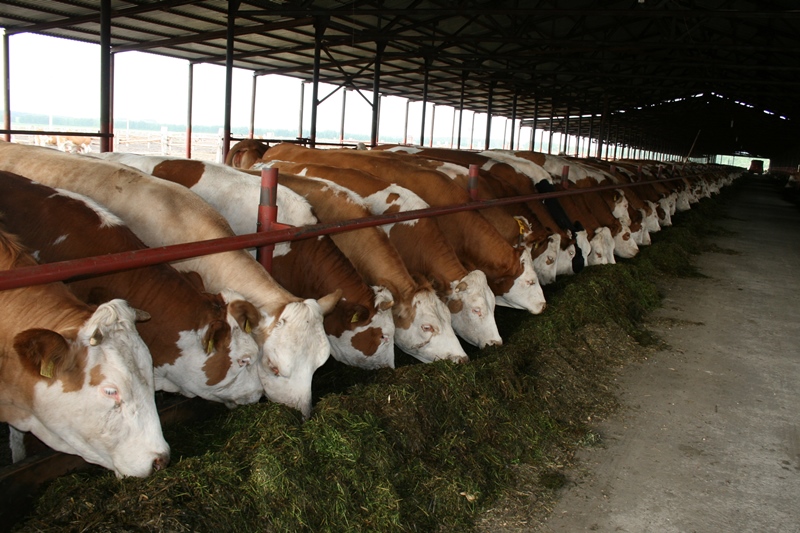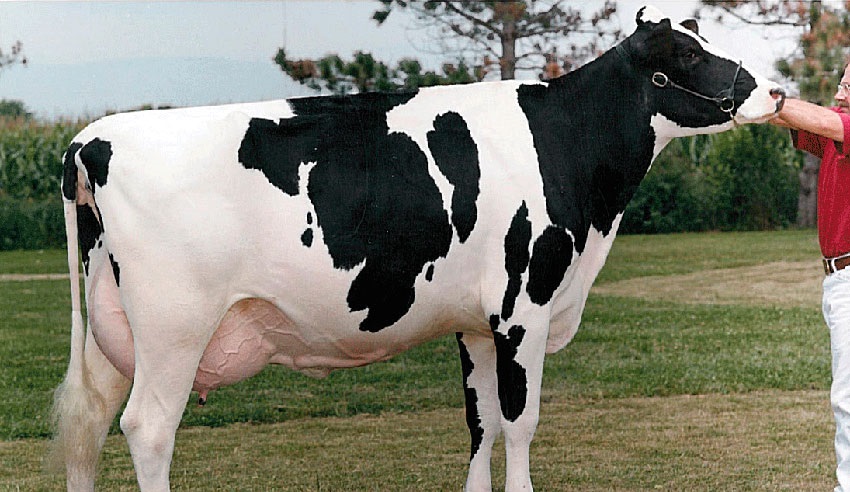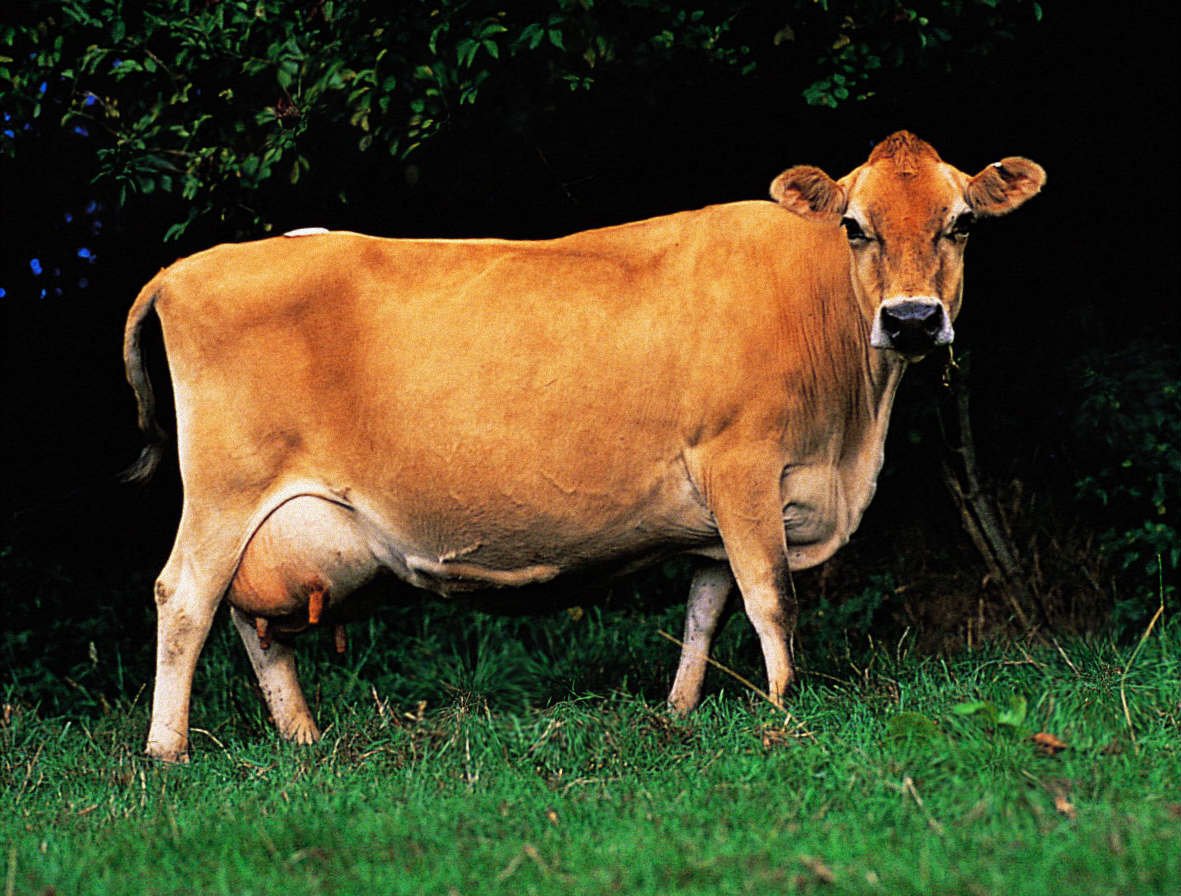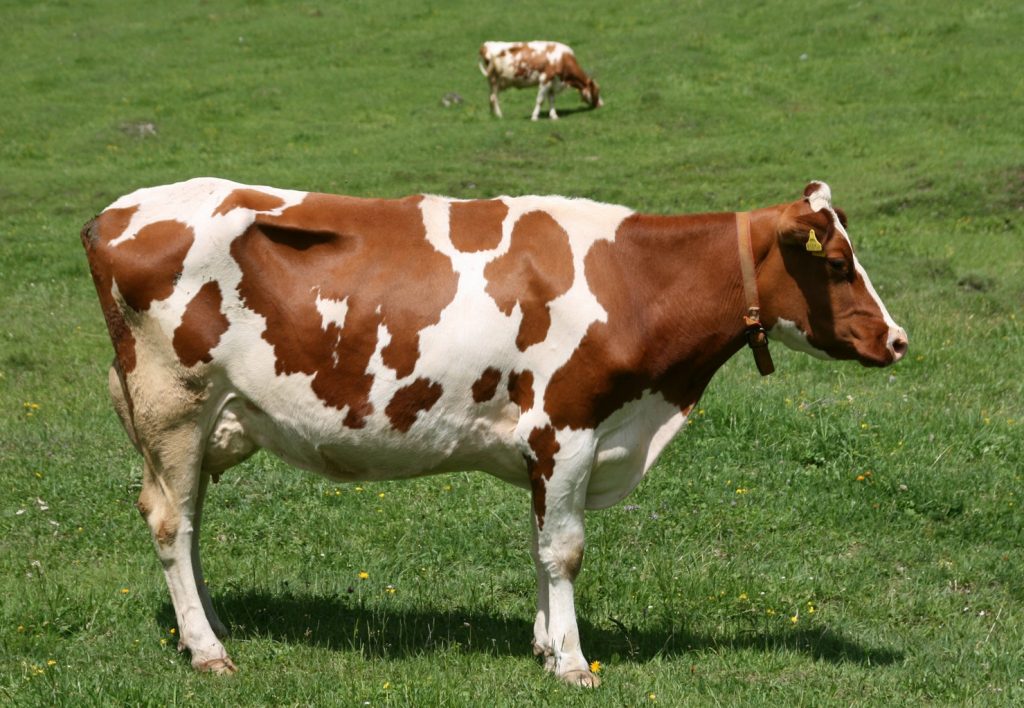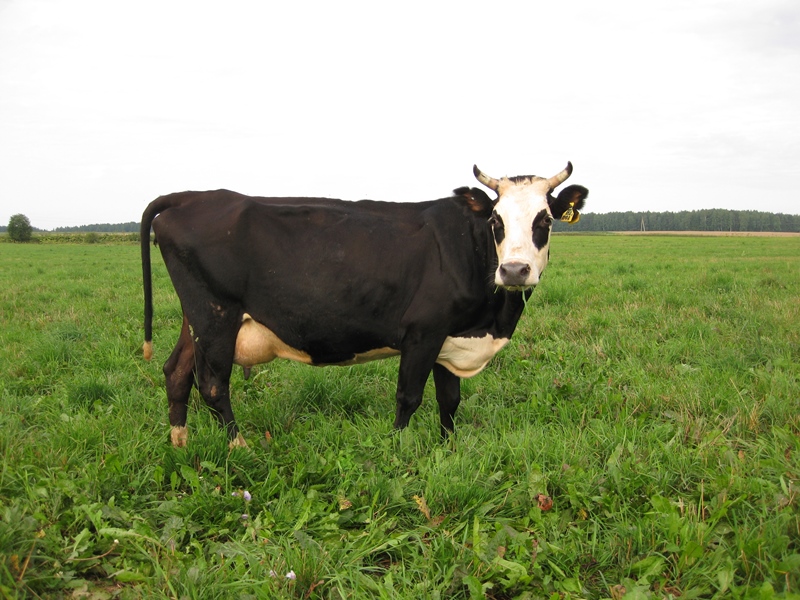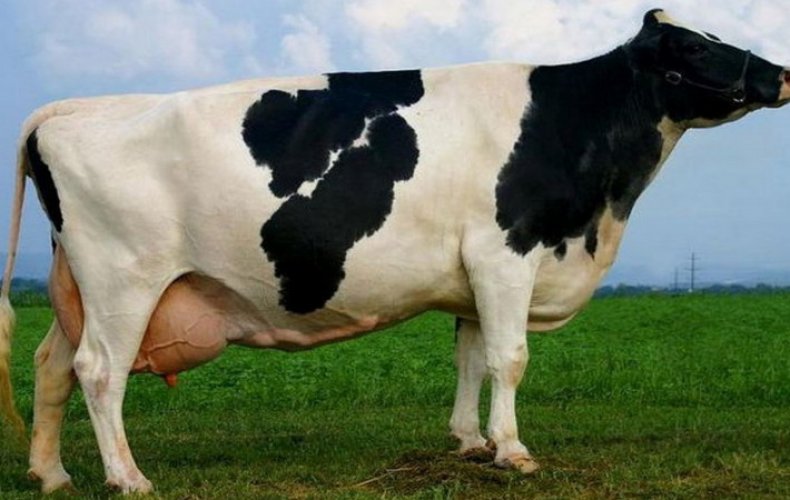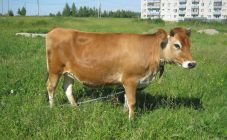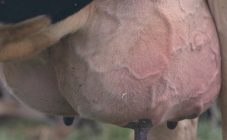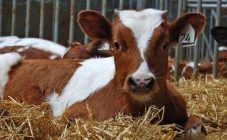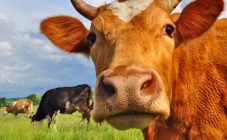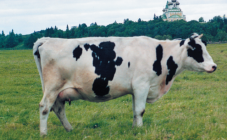Content:
Today in the CIS there are more than 70 breeds of dairy cows. With their help, the population is provided with high-quality milk, sour cream, cottage cheese and other dairy and fermented milk products. Rating of the most productive dairy cows, their features.
Dairy breeds of cows: description and characteristics
The cash cow differs significantly from the meat representatives of the species. Their productivity is due to various characteristics of the exterior, as well as the features of the physiological structure.
Typically, high-yielding cows have the following qualities:
- Lean physique, musculature is poorly developed.
- An elongated elongated body, has the shape of a triangle, its base falls on the back. It can be seen when the cow is seen from above or from the side.
- Long strong legs.
- Straight back.
- A mobile, elongated neck (quite often has a skin fold).
- The backbone is light.
- The main distinguishing feature is a well-developed udder of large size, nipples are also large with clearly visible veins.
The vast majority of dairy cows have a calm and balanced disposition. All representatives of cattle can be kept in stalls, pasture or mixed type. Cattle have a well-developed cardiovascular and respiratory systems, organs of the digestive tract.
It is possible to achieve maximum productivity after 5-6 calving. Depending on the breed, the productivity of the first lactation is on average 60%.
Breeds of dairy cows: TOP-10
Burenka with a dairy orientation differs from other types of cattle in high milk yield. For some representatives, this figure exceeds 10 tons annually (subject to the rules of maintenance, nutrition and care). Average annual productivity varies between 3-5 tons. The rating of dairy cow breeds is presented below
Holstein breed of cows
Perhaps the most popular type of cattle in the world. The breed was bred in North America, breeders from the USA and Canada fruitfully collaborated. The live weight of the Canadian representative can reach 600 kg. Average milk production per year is 6.5 - 7 tons of milk, with an approximate fat content of 3.7%. To improve the qualities of the animal, it is crossed with representatives of the black-and-white breed, thus, milk yield increases by about 200 liters. Today, breeders continue to work to improve the quality of the breed, therefore, they mainly breed bulls.
Black and white
Cattle was bred by domestic breeders back in Soviet times by crossing the breeds of Dutch cows with local ones. Today, in terms of numbers, the spotted cow is second only to the red variegated and Simmental cows. It gained such popularity due to its high milk yield and high-quality milk, as well as excellent meat qualities. The animal has an elongated elongated body of large size, the loin is wide, and the chest is deep.The average weight of a newborn calf is 35 kg. The breed is famous for its high production of high-quality milk, the annual milk yield varies within 5.5-6 tons, the fat content of the product is low - 3.5%. Today, work continues to improve the quality of the breed. Farmers should take into account that, due to their large size, animals need large amounts of feed.
Jersey suit
It is considered one of the oldest breeds. Initially, the breed was bred in England, the authorities introduced strict control to ensure that representatives of the breeds did not leave the borders of Foggy Albion, monitored purebred. Today, these representatives can be found in absolutely any country in the world, they perfectly acclimatize in any climatic conditions. Their characters are difficult, but if the animal is monitored and looked after at regular intervals, they will be calm and docile. In terms of productivity, this breed cannot be classified as one of the best, but the concentration of fat and protein in milk is high. The milk has a yellowish color with pronounced fat globules. How much milk does the Jersey breed produce annually? Annual milk yield varies from 3 to 3.5 tons, milk fat content can reach 7%.
Simmental suit
It is considered one of the most popular and demanded. The homeland of animals is Switzerland. Thanks to the unique weather and climatic conditions, the breed was made versatile, i.e. meat and dairy. Alpine meadows among the mountains where animals graze are famous all over the world. Today this breed is the most widespread in Russia. In addition to excellent indicators of milk yield, there is also high quality meat. On average, the annual milk yield is 5 tons, with a milk fat content of 4%. Their highest concentration is concentrated in the Saratov and Voronezh regions and the Chernozem region. It is actively grown in household livestock breeding, since the breed is not picky about keeping conditions and feeding.
Ayshir cows
Danish origin are widespread in the world. And all thanks to the well-balanced milk with fat globules on the surface. The weight of cows is relatively small (up to 500 kg), but one animal can get up to 5 tons of milk per year, with an average fat percentage of 4.2%. Animals are well acclimatized, but they tolerate severe cold better than heat. The color is red and motley, but there are exceptions. The breed belongs to the early maturing, one-year-old goby reaches a weight of 350 kg.
Red steppe suit
It also belongs to the milky type with its physique. The average weight of adult animals is no more than 550 kg. The milk productivity of the best herds is up to 5 tons annually. As for the shortcomings, the meat qualities in animals are not very well developed. Today, breeders are working to improve the qualities of the breed, most often they are crossed with Angler bulls.
Yaroslavl, she is a blue cow
It is considered one of the best domestic breeds of dairy cattle. Cows are characterized by a pronounced milk type, angular forms, muscles are poorly developed. A characteristic feature of the breed is the specific location of the nipples, the front ones are located wider from each other than the back ones. Meat quality can be considered satisfactory, since young animals begin to store fat quickly. Milk production rates are high, up to 5 tons of milk can be collected annually, fat content is more than 4%. Its main feature is its excellent adaptive properties.
Kholmogory breed
It also belongs to the milk type. The breed is Buryat, perfectly adapted to unfavorable northern climatic conditions (animals are bred in Magadan and Yakutia). The advantage is unpretentious in care and maintenance. Not only excellent dairy qualities are characteristic, but also meat ones. Under favorable living conditions, the animal is capable of bringing up to 6,000 liters of milk annually. The weight of adult cows, as a rule, exceeds 550 kg.
Dutch dairy cows
One of the leading breeds in the world, they cannot be cheap. This is one of the most ancient and highly productive colors, today it is bred in more than 33 countries of the world. Despite the milky orientation, the musculature is excellently developed, the body is broad-bodied and compact. The modern appearance was formed already in the 20th century. Scientists breeders believe that the gene of this animal is present in all dairy breeds. Each year one cow is able to bring more than 4 tons of milk with a fat content of up to 4%. The predominant feature is early maturity, the live weight of adult bulls is 900 kg, and of cows - 550 kg.
Montbeliard breed
It is considered one of the most unpretentious animals, adapting even to harsh climatic and weather conditions. Today the animal can be found on all continents, distributed in Europe and Asia, Africa and North America. Yields up to 5 tons of milk annually, meat quality can be considered satisfactory.
Factors affecting milk production of cows
The milk production of cattle is highly dependent on many factors hereditary and non-hereditary.
- Maintenance and feeding are the most important factors that affect milk production, since breed and hereditary characteristics can be fully realized only with abundant, high-quality and balanced nutrition and comfortable conditions of keeping. Particular attention should be paid to nutrition during the dry period and the milking time.
- The age of the animal. Young cows usually produce less milk than mature cows. The duration of growth for cattle is 5 years, so milk yield should increase in the sixth year of life. In the ninth year of life, milk production rates begin to gradually decline.
- Live weight. Each color has an optimal body weight, which allows you to realize all the breed and hereditary potential. An increase in live body weight always has a beneficial effect on milk production.
- Age of first insemination. The optimal age is 16-18 months, but the question is also important whether the heifer is ready for this. The minimum cow weight should be 340 kg (but it all depends on the breed). The first calving takes place no later than 27 months. Fertilization of cows lagging behind in development leads to their greater lagging behind and a reduction in milk yield; there is a high probability that weak and sick calves will be born.
- Duration of the service period. Service period is the time interval between calving until the next fertile fertilization. The optimal period is 60-80 days. If you miss a few hunts, barrenness may have formed.
- Season of the year and calving. By providing quality nutrition throughout the year, the effect of calving season on milk production is negligible. If the food supply is not very good, then the level of feeding is uneven in different seasons. The best time for calving is spring.
There is a large abundance of dairy breeds, but the best performing animals are listed above.
